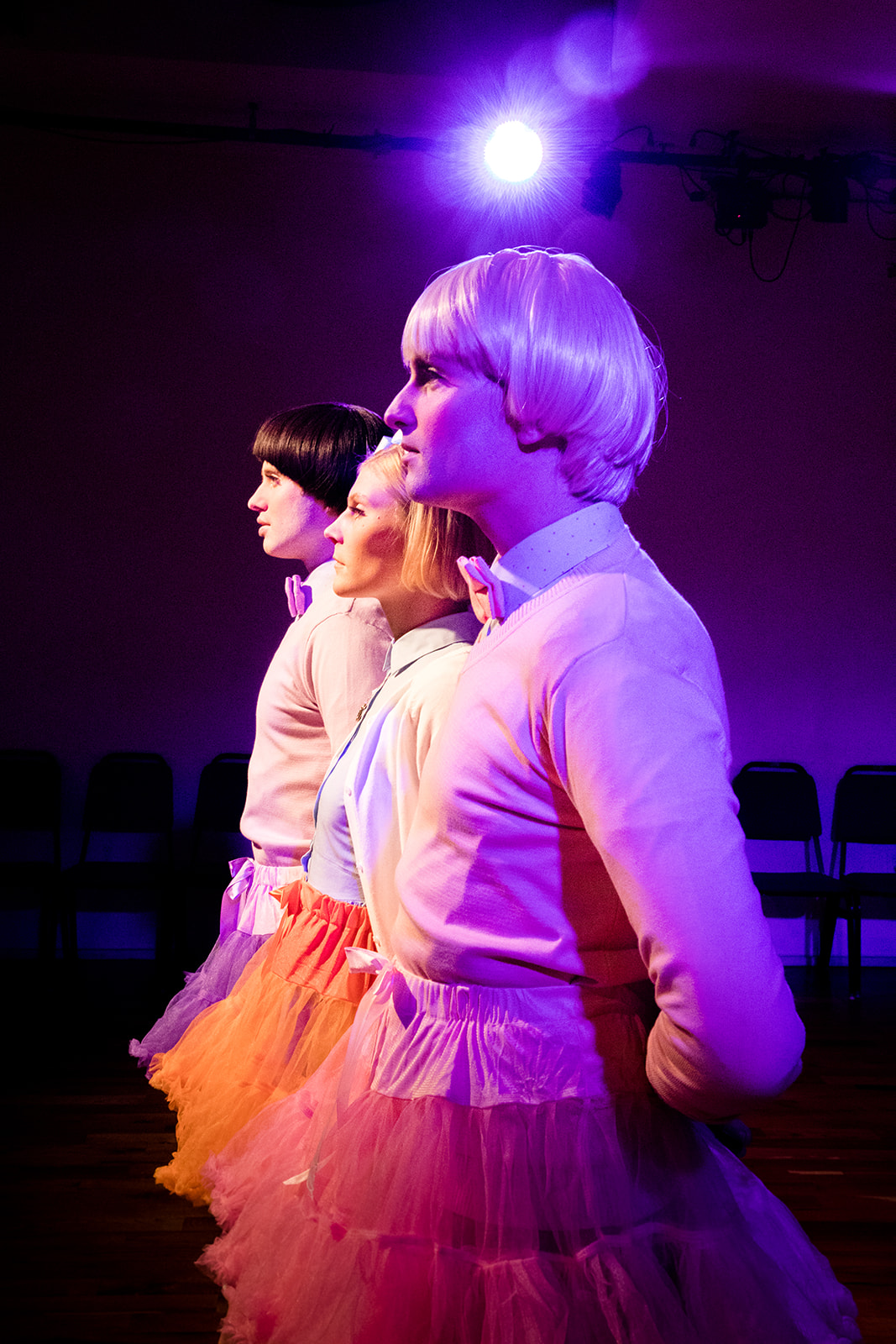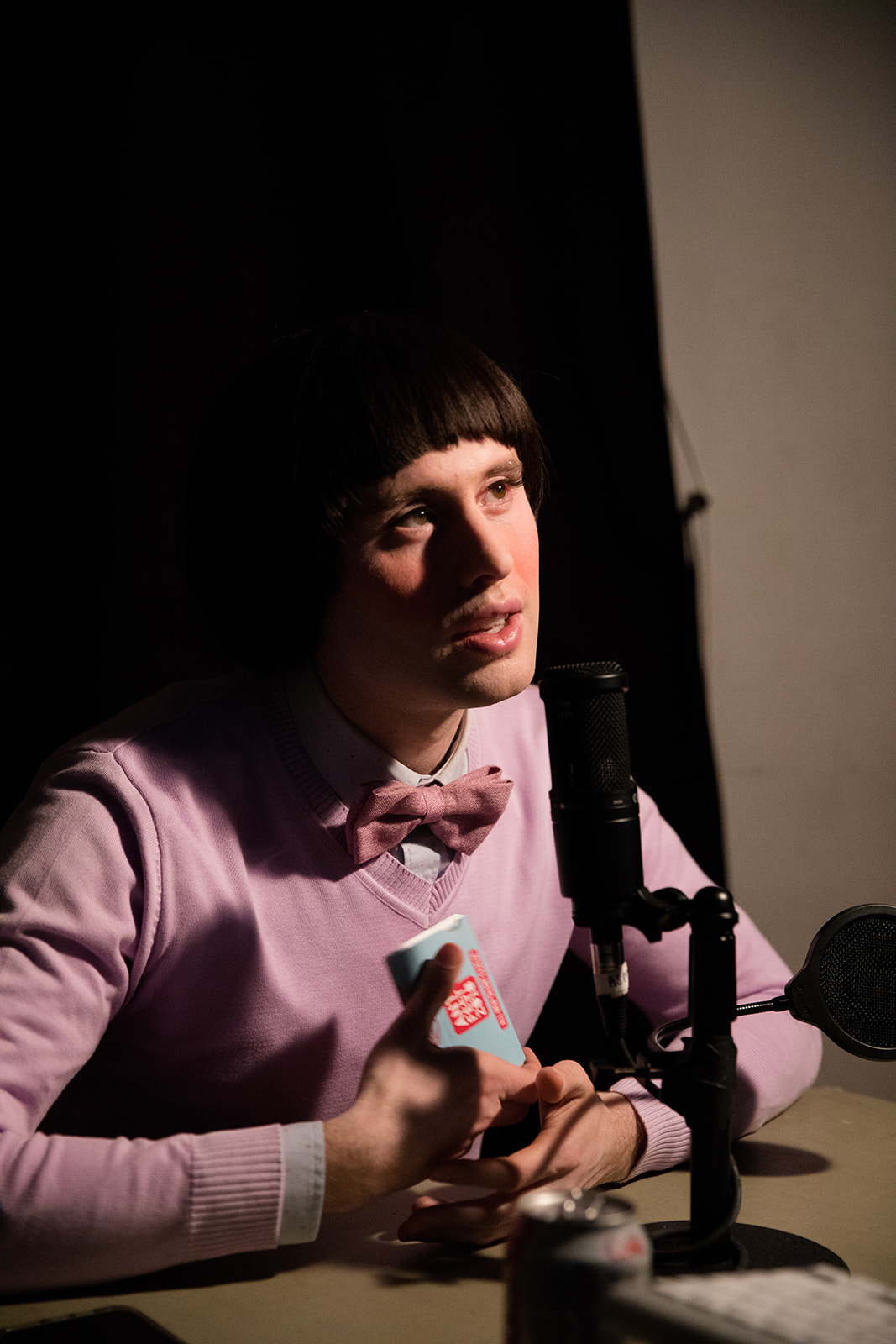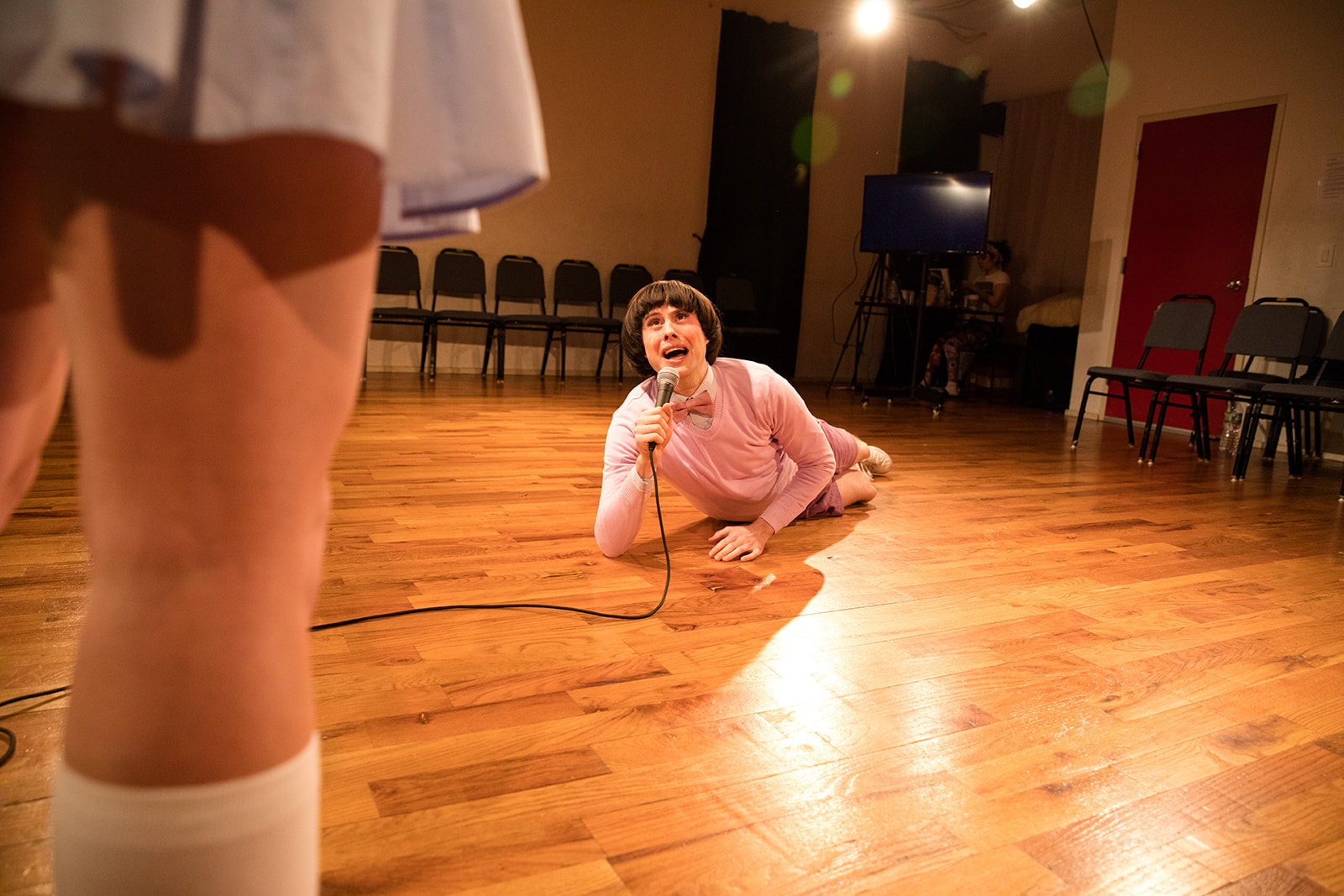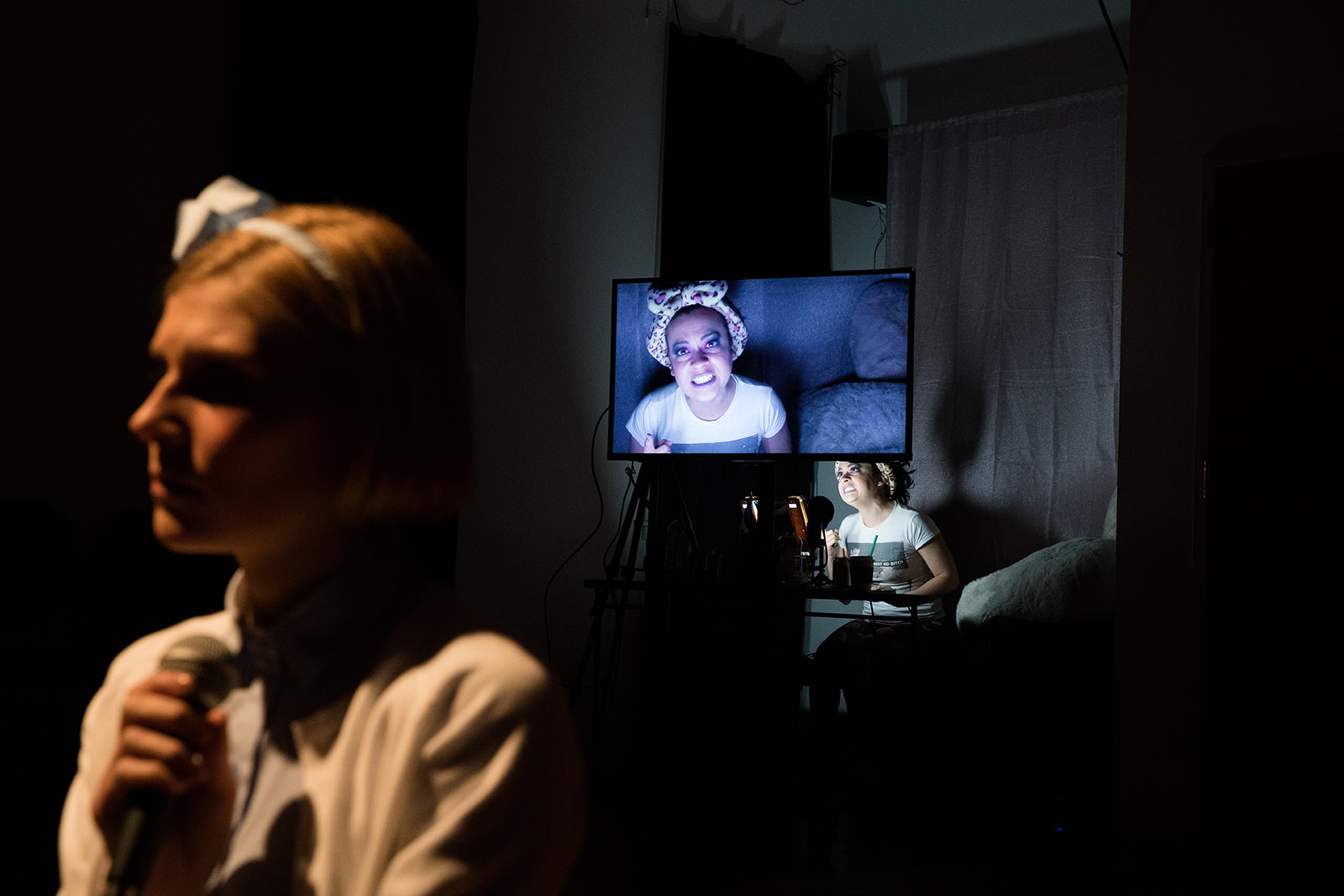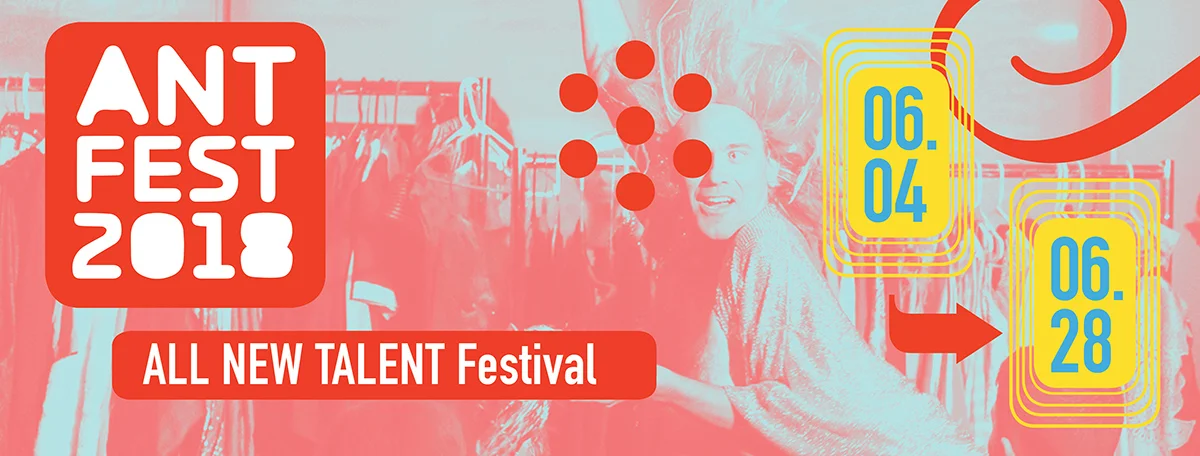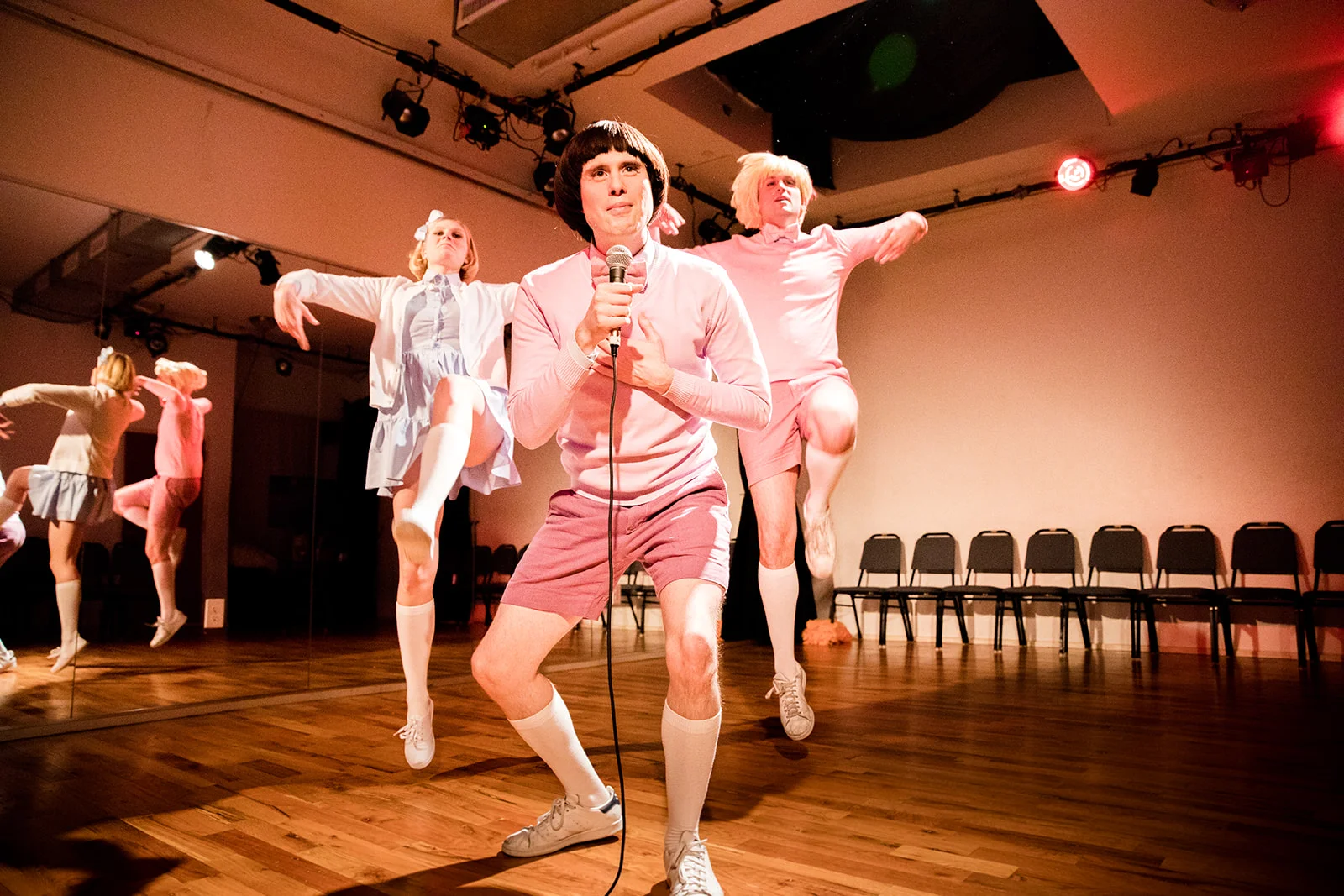A DOLL’S HOUSE, PART 3
WRITTEN AND DIRECTED BY MICHAEL BRESLIN AND PATRICK FOLEY
IN COLLABORATION WITH CAT RODRÍGUEZ, ARIEL SIBERT, AND ZOE MANN
ABOUT
A Doll’s House, Part 3 picks up where Nora left off, after she picked up where she left off, after slamming the door on her husband and children in 1879. Michael+Patrick’s sequel to the sequel they never read is a self-serious examination of theater, gender, race, class and hierarchy for the reality TV generation.
Michael, Patrick, and Zoe Mann play Nora’s three children–Bob, Ivar, and Emmie–as they attempt to create an experimental performance collective in resistance to the American New Play Development Complex. They commit themselves to new forms of media performance like ASMR and YouTube makeup tutorials. The trio of siblings works through issues of gender inequity, the hierarchies of creating performance, and inherited trauma as they grow together and apart in the wake of their mother’s absence and simultaneous hyper-presence.
Catherine Rodriguez rounds out the cast as the Content Kween, monologuing in the confessional mode (half real, half fake, all true) about her own relationships with her sister, race, gender, and inherited trauma. The piece uses video, song, dance, and ASMR technologies to generate a transmedia performance.
PRODUCTIONS
Exponential Festival 2019 (January 11-13, Triskelion Arts)
Ars Nova’s ANT Fest (June 2018)
Wesleyan U. Center for the Arts (February 2019)
Hamilton College Kennedy Theater Center (September 2019)
TEAM
Created in collaboration with the cast and dramaturg.
Ivar: PATRICK FOLEY
Bob: MICHAEL BRESLIN
Emmie: ZOE MANN (ANNA CRIVELLI at Exponential 2019!)
Content Kween: CATHERINE MARÍA RODRÍGUEZ
Dramaturg: ARIEL SIBERT
Stage Manager: JULIA BATES
Lighting and Scenic Design: KRISTA SMITH
Costume Design: COLE MCCARTY
Sound Design: MICHAEL COSTAGLIOLA
Projection Design: CHRIS EVANS and ERIN SULLIVAN
Beats: ASHLEY JEAN VANICEK
Production photos: WALLS TRIMBLE
Dramaturg’s Note
“What is ultimately the significance of this insignificance?” – Roland Barthes, “The Reality Effect”
Perhaps the phenomenon we endlessly discuss is not so much fakeness as an excess of Reality. Reality as distinguished from “truth” (ever since the aspirations of 19th-century Objectivity and its Realism were debunked.) As Barthes knew, Reality and Realism are, in the end, narrative effects, invoked by the accumulation of useless details, by the confessional mode, by self-humiliation, by “truth-telling” and “like-it-is-telling,” by the presence of the boom in the frame and the running mascara, by boredom, by an overabundance of “fact.”
Reality lies in overabundance. The Internet invented the 86,400-second news cycle, the live stream, five-hour videos of a 16-year-old studying, and Auto-Sensory Median Response (ASMR), a kind of neurological frisson stimulated by banal, whispered monologues and sensorial luxury: the sounds of lips smacking, tongues against teeth, pencils against paper, the unwrapping of candies, the eroticized anodyne.
What can be redeemed from this state of affairs? What escapes the ideology of the truth-claim, the PolitiFact, the action-item? Trauma, maybe—unaccountable events that bifurcate the world into victims and victimizers, escapees and remnants, only viewable from askance, in parallax. Gay shit. “Queer performance.” Women’s work. Emotional labor. Sweat. Excessive emotions. Vocalizations of all kinds, whispered or full-throated.
All claims to the Real are pleas for redemption. When I tell you how it is, I beg for you to answer an unspoken question: was it really?
—ARIEL SIBERT, dramaturg

